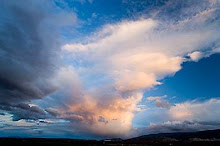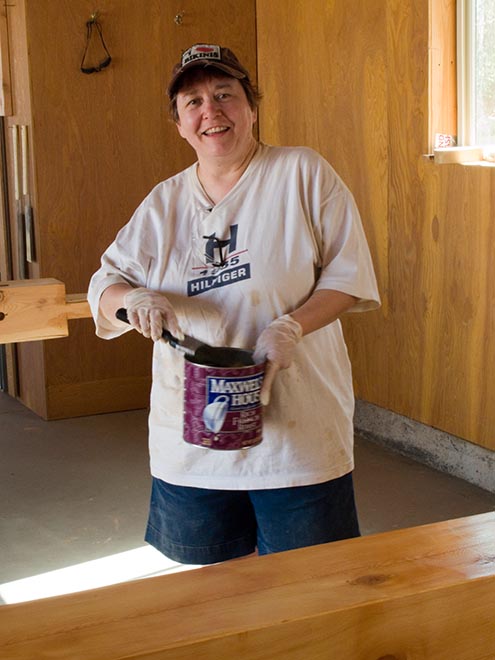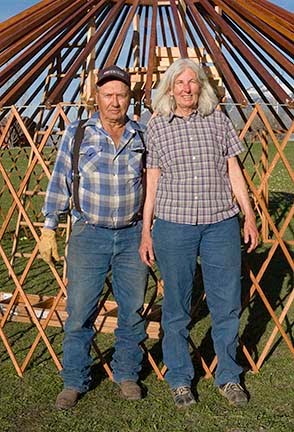Because this is our only real experience working with straw bale walls, I’m only guessing when I say most of those walls meet at corners. Hence, we wouldn’t typically see the ends of any bales in an interior wall. We would usually see them at the exterior corners of the house where those ends could be easily covered with plaster.
 Our house, with its “T” shape has four places where the end of a bale wall can be seen inside the house. These also happen to be the places where much of the electrical wiring has been placed as can be seen in this photo.
Our house, with its “T” shape has four places where the end of a bale wall can be seen inside the house. These also happen to be the places where much of the electrical wiring has been placed as can be seen in this photo.Looking closely at the bales, there is a great deal of loosely bound straw plus large gaps between the bales. There are also several large indentations created by pressure the baling twine exerts on the bale to hold it together. In addition, there's that plastic-coated wiring to deal with. All of these things could be big problems when it's time to plaster this section of the wall. Next spring we plan to apply two inches of plaster to all of the interior walls. However, some of the gaps and indentations in these problem areas are as large as 8 inches. What to do?
On the exterior of our house, there were several sections where we used wood lath to cover gaps which we stuffed with straw. It was something of an experiment although we had read about it on-line and in our plaster book. When we plastered the lath, everything went well, so we've decided to attempt the same method on the four problem areas inside the house.
 |
| One-inch nailer on left |
Working from the floor up, I nailed a few pieces of lath in place, then stuffed straw into the gaps.
 Here is the entire section covered with lath.
Here is the entire section covered with lath.And a close-up. It seems like this is a surface we'll be able to plaster without any trouble. We'll see the result next spring.



























